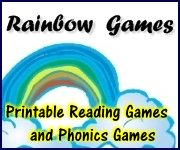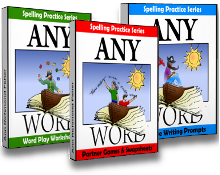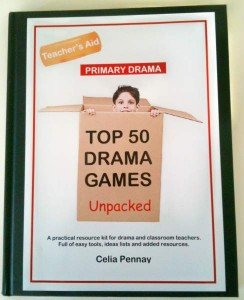How to Write a Play
Creative Writing Activities for the Drama Kings and Queens!
Learning how to write a play provides simultaneous practice on many skills. Not only that, your most theatrical students will have a blast!
By reading a story and then discovering how to write a play about the plot in their own words, kids improve their comprehension abilities. Students must understand a storyline in order to write about it. As they write, kids are practicing proper punctuation and sentence structure. While reading their scripts, they must give attention to oral fluency. As they recreate a tale, they gain a deeper understanding of the basic elements of fiction: interesting characters and settings, an engaging plot, and sparkling dialogue. The stages involved in how to write a play may take as long as a week, but your class will be strengthening skills across the curriculum.
Learning how to write a play offers ample opportunities to differentiate instruction through the nine recognized multiple intelligences. Through the activities of writing and producing a readers' theatre script, students are absorbing the material through the ways they learn best. Let's take a look at some of those ways!
How to Write a Play: Multiple Intelligence Connections
- Verbal-Linguistic: demonstrate reading comprehension; write a script; demonstrate oral fluency in the performance of the play
- Spatial: design and create scenery and stage props
- Bodily-Kinesthetic: perform the play
- Logical-Mathematical: sequence the plot in the proper order; time the play for an allotted amount of minutes
- Musical: select music to create the mood for the play
- Interpersonal: write and discuss scripts with partners or groups; evaluate other groups' plays
- Intrapersonal: write convincing character dialogue
- Naturalist: select appropriate natural items (potted plants, interesting rocks, etc.) as stage props
- Existential: write a summary of what life lessons the characters may have learned
Now that we've looked at how preparing a play relates to the nine ways of being smart, let's begin the process of writing the script itself.
How to Write a Play: Step-by-Step
This experience will be more successful if students read, review, and discuss different plays together throughout the school year. It's a good year-end summary for the novels and stories your class has studied during the preceeding months.
Step 1: When first teaching students how to write a play, it's easiest to use a familiar story, such as a fairy tale. After reading aloud the chosen story, discuss the basic elements of fiction:
- Title: the name of the story
- Characters: the people or animals in the story
- Setting: where the story takes place
- Plot: the action of the story
- Title: The Brementown Musicians
- Characters: Donkey, Dog, Cat, Rooster, and Three Robbers
- Setting: Along the road to Bremen and in a forest cottage
- Plot: Four homeless animals travel to Bremen with the goal of making a new life for themselves. Along the way, they foil the plans for robbers, set up housekeeping in a cozy cottage, and live happily together.
- Scene: A farm pasture along the road to Bremen
- Narrator: Once there was a donkey who worked hard for his owner for many years. Daily, he carried heavy bags of grain to the mill. But as the years passed and the donkey grew older, he could no longer work as hard. One day he overheard his owner discussing plans to sell him. The donkey was worried.
- Donkey: Oh, what will happen to me? I'll run away! I'll go to Bremen, where I can be a fine musician!
- Narrator: So the donkey set out that night for Bremen. He had not traveled far when he spotted a dog lying by the roadside...
- Develop a list of familiar fairy tales.
- Form groups of four to six students.
- Ask each group to select a tale to read and begin to map out notes for the title, characters, setting, and plot.
- Each group must decide which of its members will perform as specific characters within their chosen tale.
- Group members should begin to write together, adapting a script from the fairy tale. Encourage kids to interact with each other, discussing improvements upon their scripts, and writing and editing dialogue for their individual characters.
- Allow reasonable work sessions to complete the plays. Five daily 60-minute cooperative writing sessions should do the trick!
- Edit and correct all of the plays, and use one to make copies for the students in each group. Each group member needs the same copy for rehearsals and performances! Helpful hint: type the rehearsal/performance copies on a computer!
- Allow students to practice and perform their plays as readers' theatre, complete with backgrounds, props, costumes, or puppets. They may wish to give performances for parents or other classes. You might choose to film each group, so they can enjoy their own hard work later! Don't forget refreshments!

As your class learns how to write a play, you'll be able to check their progress by noting a deepening understanding of reading comprehension as they write. You'll read through final drafts, noting proper editing of narration and dialogue. And you'll see improved oral fluency as students engage in repeated readings through rehearsals and performances.
A bonus challenge! Visit these pages, writing fairy tales and fairy tale writing prompts for more advanced ideas in using timeless tales to help you teach kids how to write a play!
Let the performances begin!
Return from How to Write a Play to Creative Writing Activities
Return from How to Write a Play to Creative Writing Ideas and Activities
Helping You Write Across the Curriculum!
copyright 2009-2013 www.creative-writing-ideas-and-activities.com
Our Most Popular Pages
5. Writing a Personal Narritive
10. Elements of Persuasive Writing
Recommeded Resources:
AnyWord(TM) Spelling Practice Series!
Worksheets, games and activities to use with any spelling words. Three volumes in all!
Stop Essay Pain!
LitWorks.com
Resources to help students prepare for literature examinations.
Teach Kids Drama!








